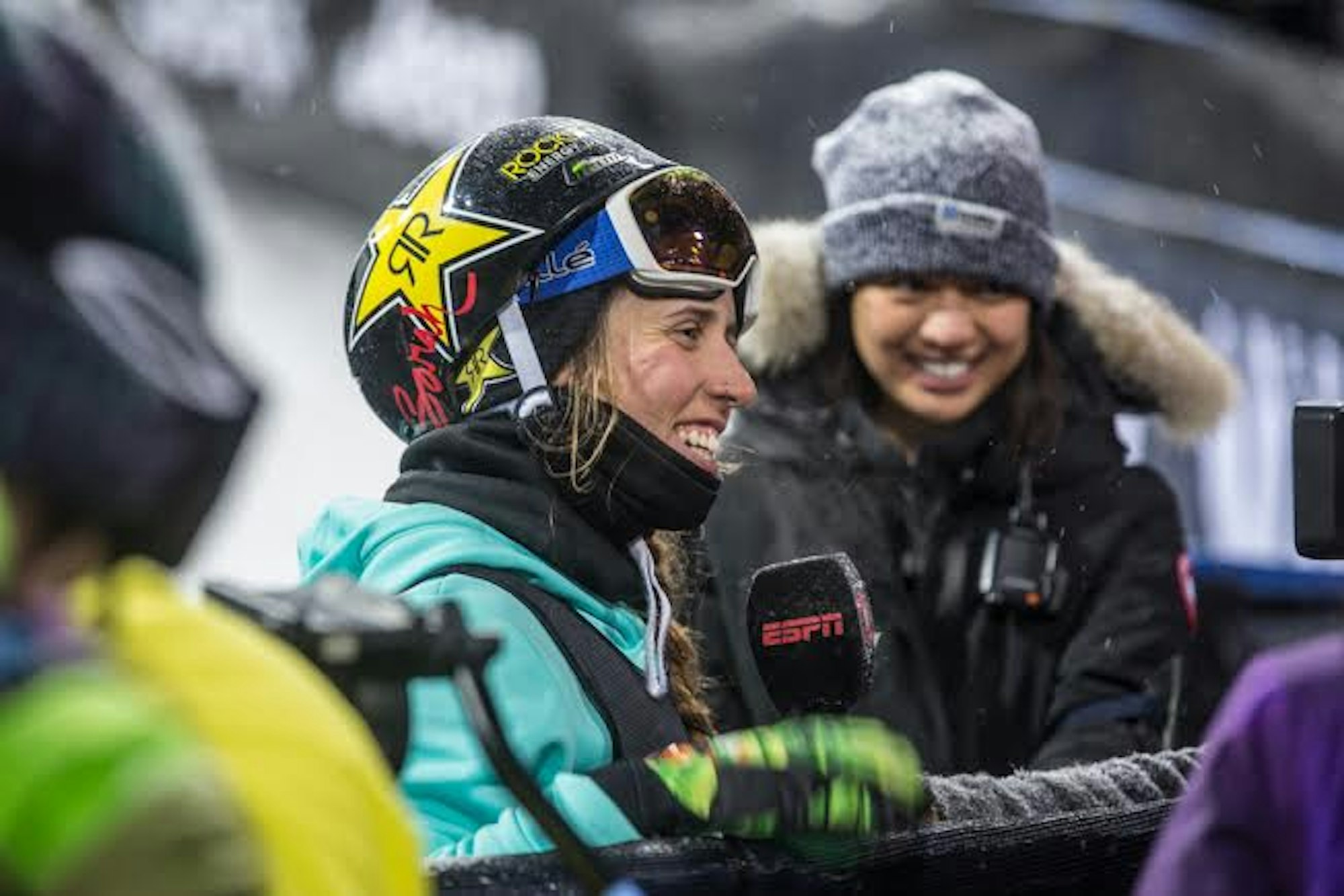by Jen Hudak
I’m not going to attack Nate Abbott or FREESKIER for publishing his opinion piece online after the women’s ski pipe final at X Games this past Thursday, it is after all, just one opinion. Nate says that he loves these women and “respects how tough and hardworking these ladies are,” so I’ll give him the benefit of the doubt on this one, and believe that he meant well. The main issue at hand here isn’t new. This wasn’t the first time women’s skiing has been attacked for not being good enough, being boring to watch, or being threatened to be “kicked out” of X Games, and I’m sure that it won’t be the last. We women, the ones out there, blowing their knees while doing progressive tricks in the halfpipe, have thick skin. We’ve heard all this before and we just keep on trucking.
The challenge that women’s halfpipe skiing (and slopestyle skiing, too) faces today is not an issue of lack of talent or drive, it’s an issue of scarcity: there is a shallow depth of field of the athletes. Injuries are commonplace in this sport for males and females alike, yet for the guys’ field, when Tom Wallisch blows his knee, we are still able to send Nick Goepper, Gus Kenworthy, Joss Christensen, and Bobby Brown to the Olympics, while Alex Schlopy, McRae Williams and Matt Walker stay at home. And that’s just the Americans! There are so many talented males out there—it’s impressive and always fun (although often confusing) to watch them compete and get judged. The men of halfpipe are similar. I was struck Sunday afternoon, while watching the men’s ski pipe finals go down, that it was one of the most exciting contests I had seen in a while. In the third and final run, Alex Ferreira went from last place to 1st, ultimately finishing in 3rd. The lowest score of the day was a 78.33. There were so many lead changes; some new tricks were executed, but it was the constant shuffling of the podium that made it all so riveting. You didn’t know who would take the win. I reflected back on the Tanner/Simon hay-days and what made those years so exciting—it was the suspense. Sarah Burke did so much for this sport—we love, adore and appreciate her for it all, yet it wasn’t until she began getting contested for the win, that women’s halfpipe skiing became more exciting and progression ensued. In all my years competing beside her, she never wanted all the credit.
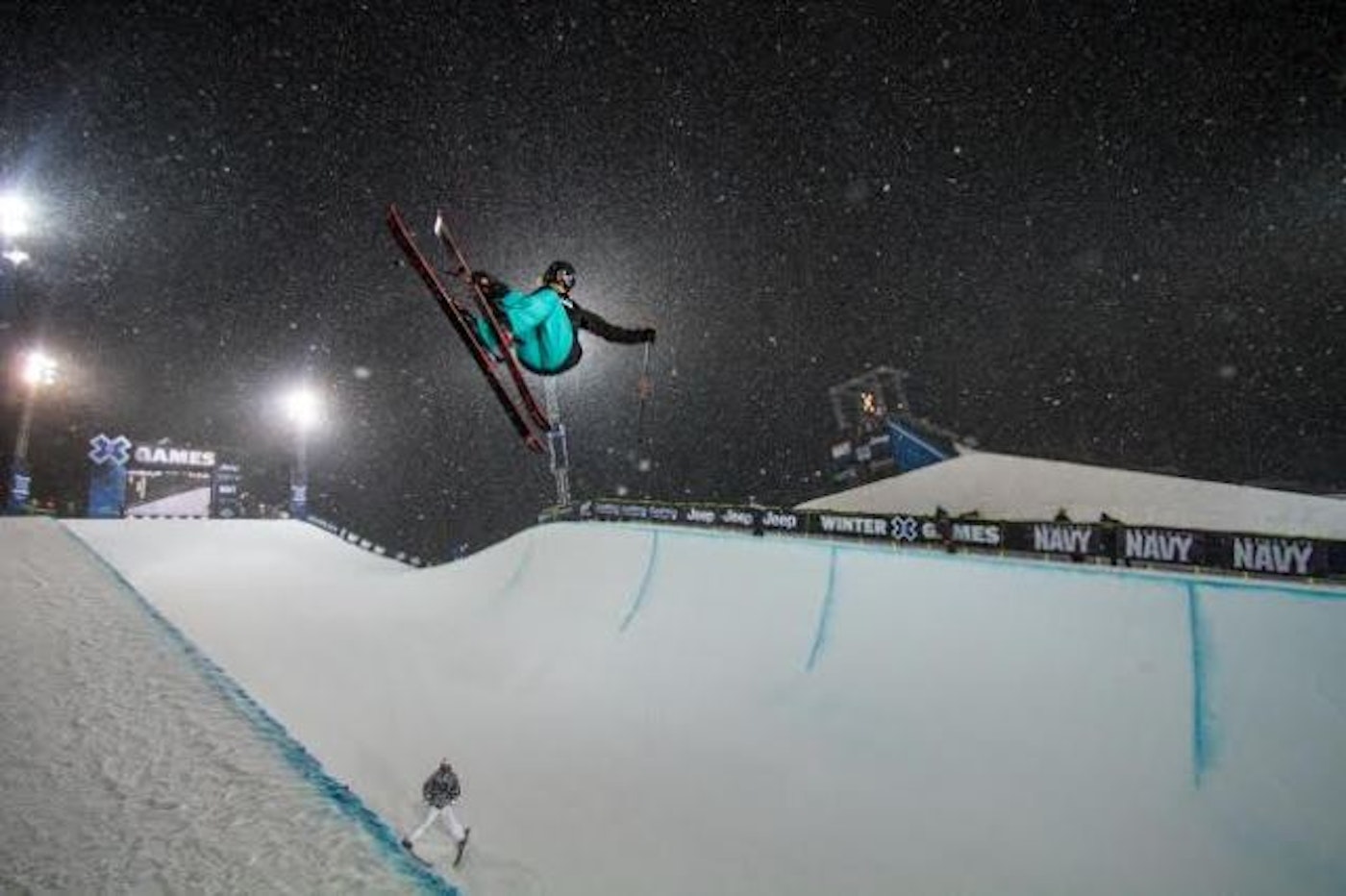
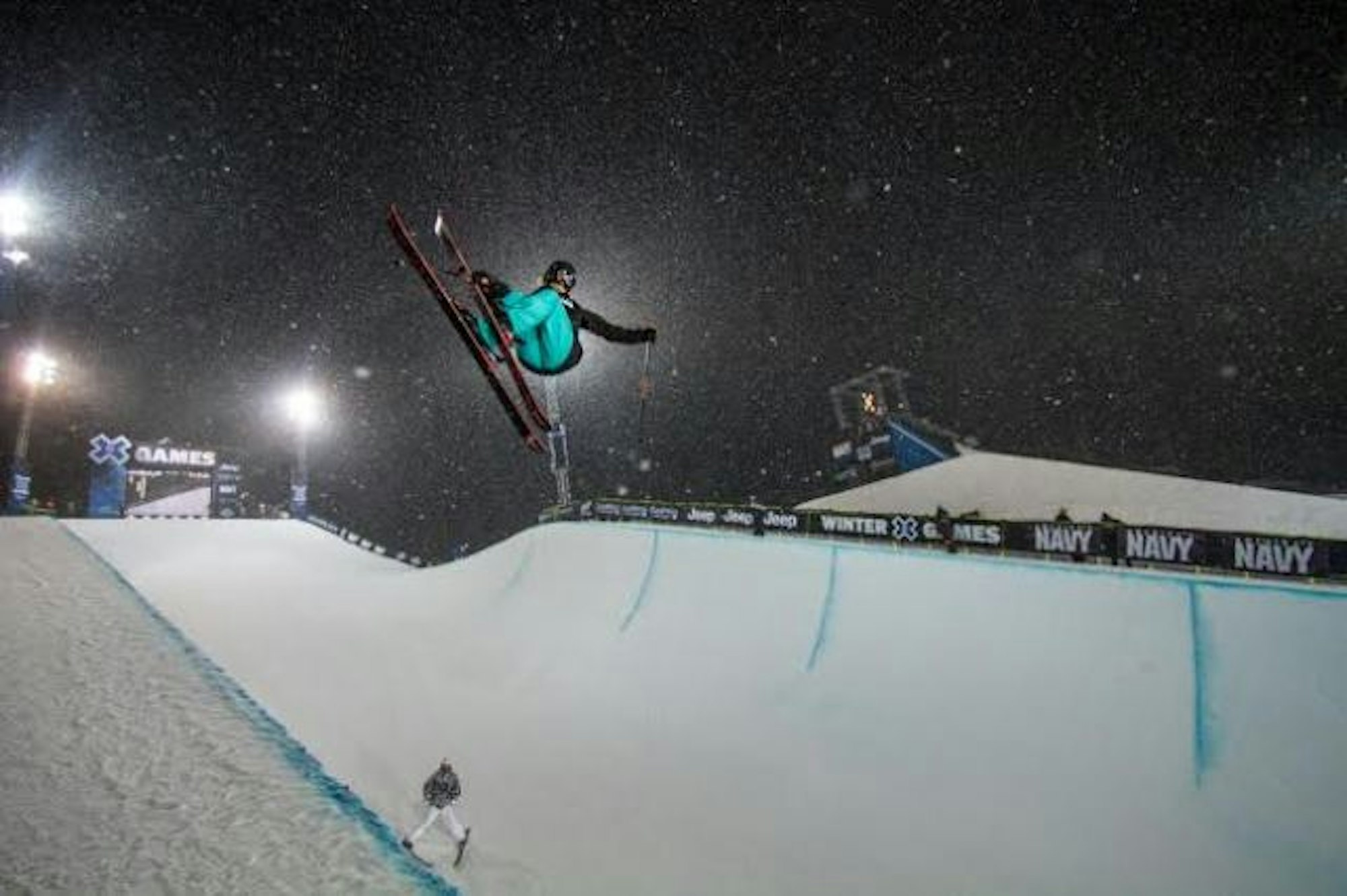
As much as we all wish we could bring Sarah back, our laws of quantum physics haven’t quite sorted through that issue yet. Since the day she passed away, the women of freeskiing have lived under her shadow, and by noting how her name is mentioned every time a woman drops into a halfpipe on competition day, that seems to be inescapable. Day in and day out, we recognize our inferiority to the likes of Sarah Burke. Who wasn’t inferior to that magnificent woman? But she never held it over anyone’s head and that is why we aspire to be like her. I remember after Sarah died, thinking that the only way to keep her alive was to keep Sarah’s spirit alive. As one of the older competitors I felt responsible for continuing to maintain the progressive, supportive community that Sarah had pioneered. It was a heavy burden to take on, and nearly impossible for me to do as I sat sidelined, preparing for what would be my 5th, 6th and 7th knee surgeries, just to repair damage from one crash. Now, this burden has been passed on to all the women of ski superpipe today, who are still fortunate to experience their lives on earth.
No one will ever be as good as the world remembers Sarah to have been. Each and every one of us halfpipe ladies has grown closer since Sarah’s passing. We knew that we had big shoes to fill, that by backing away from the challenge that was in front of us, we wouldn’t be doing Sarah’s work justice. With Sarah’s passing (and the untimely retirement and injuries of a few other strong female skiers around that same time), the trends in judging shifted and began rewarding for more technical skiing—a mixture of high rotation spins, various axes, unnatural and switch rotations. Pure amplitude, aggressive skiing, and clean grabs were no longer formula enough for the win. Believe me, I haven’t stood on a podium since 2011 and this is part of the reason why. My strength as a halfpipe skier was always in my skiing ability, edge control and amplitude, learning tricks was hard and in doing all I could to push the sport I managed to learn 1080s, but never really dialed in my right 5. Now, eight knee surgeries later, I can’t hang with the top girls. They’ve seriously progressed.
Unfortunately, even when Sarah was here, we still had a depth of field issue. Back in 2010 and 2011, when the level of women’s halfpipe skiing had supposedly reached its peak, there was still extreme criticism for the remainder of the field. In 2010, when I was fortunate to have the judges’ favor and one of my best skiing performances to capture gold at X Games for the second time that season, I’m quoted saying “6 out of 8 of us did 9s tonight, which I think is pretty cool. You know, we’ve been given flack over the years for not progressing, so I think this was an obvious disproof of that. It’s really exciting, we’re all on the same program, we all just want to get better, and keep charging and get more girls out there doing what we love to do.” This is what it comes down to. None of us are asking for our hands to be held. We really don’t want much, we don’t need you to be insincerely complimentary, just let us be. Let us try our hardest, because we do. And please, if you want to criticize, let’s keep it to the constructive kind.
To say that women’s halfpipe skiing hasn’t progressed since then is not just offensive, but wrong. In the last few years, the women have progressed their technical tricks and minimizing straight-airs. My winning run in 2010 consisted of a left 900 (no-grab), tail grab, 540 mute, alley-oop 540 (no grab), mute grab, alley-oop critical, and 720 tail. Sarah Burke’s winning run in 2011 consisted of a straight air, a massive cork 9 (no grab), alley-oop, flare (no grab), other way flare (no grab), and a cork 7 (no grab). Her average amplitude was 7’9” and highest hit was 10’10”. In 2012, days after Sarah’s death, Roz Groenewoud took home gold with a 14’ straight air, right 900 safety (touch), cork left 5, right 5 safety (touch), left 720 (no grab), switch right 5 (no grab). Average amplitude was 7’2”. This past Wednesday night, we witnessed Maddie Bowman win her third consecutive gold medal with a very technical run. Starting out with a right 900 (no grab), into left 540 tail, mute grab, left cork 900 (no grab), right 720 safety, switch left 720 (no grab). Her average amplitude was 7’0” and her biggest hit was 9’5”. Not to mention the rest of the field, several of whom didn’t have a single straight air and others who executed multiple switch-hits.
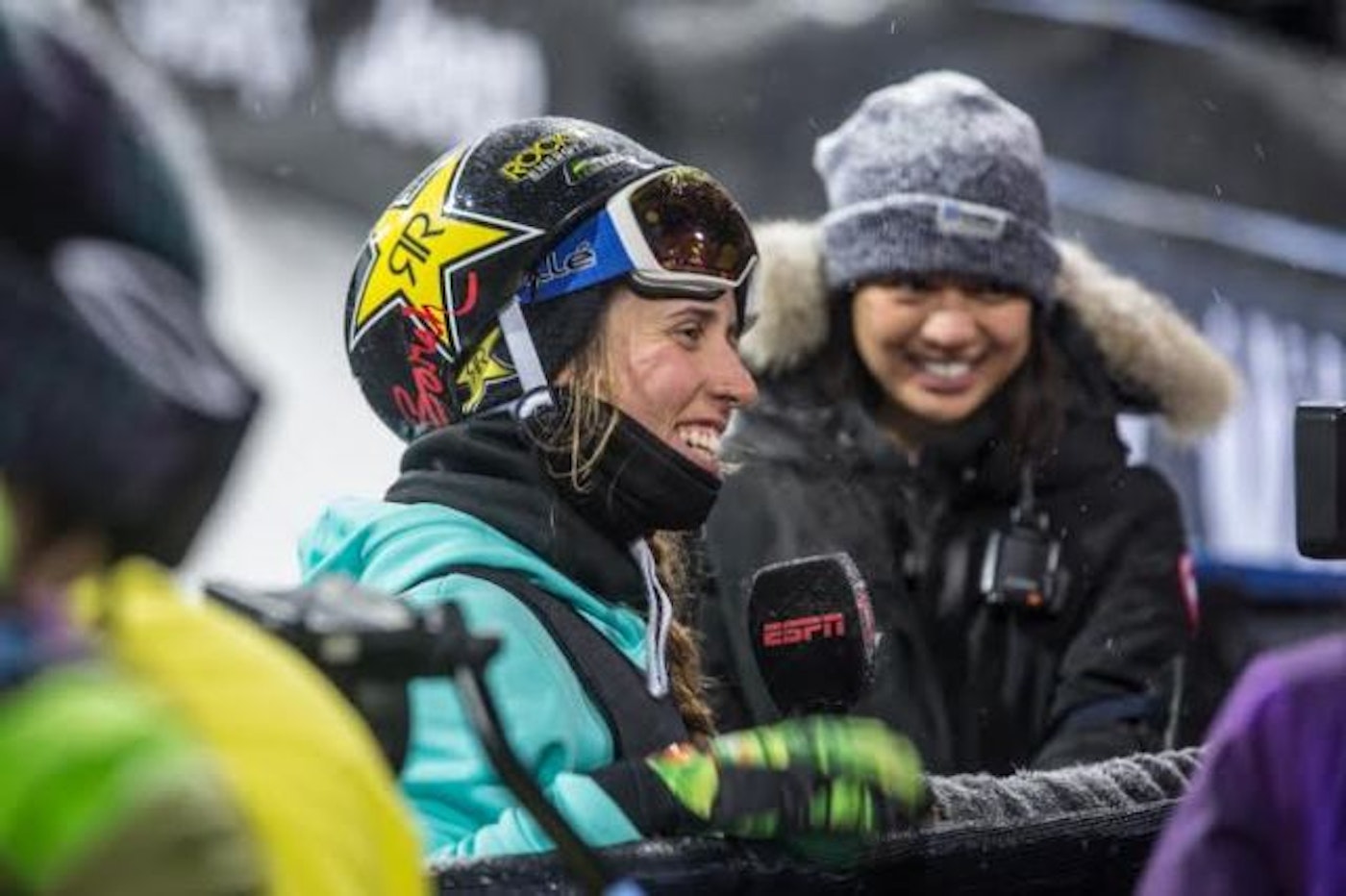
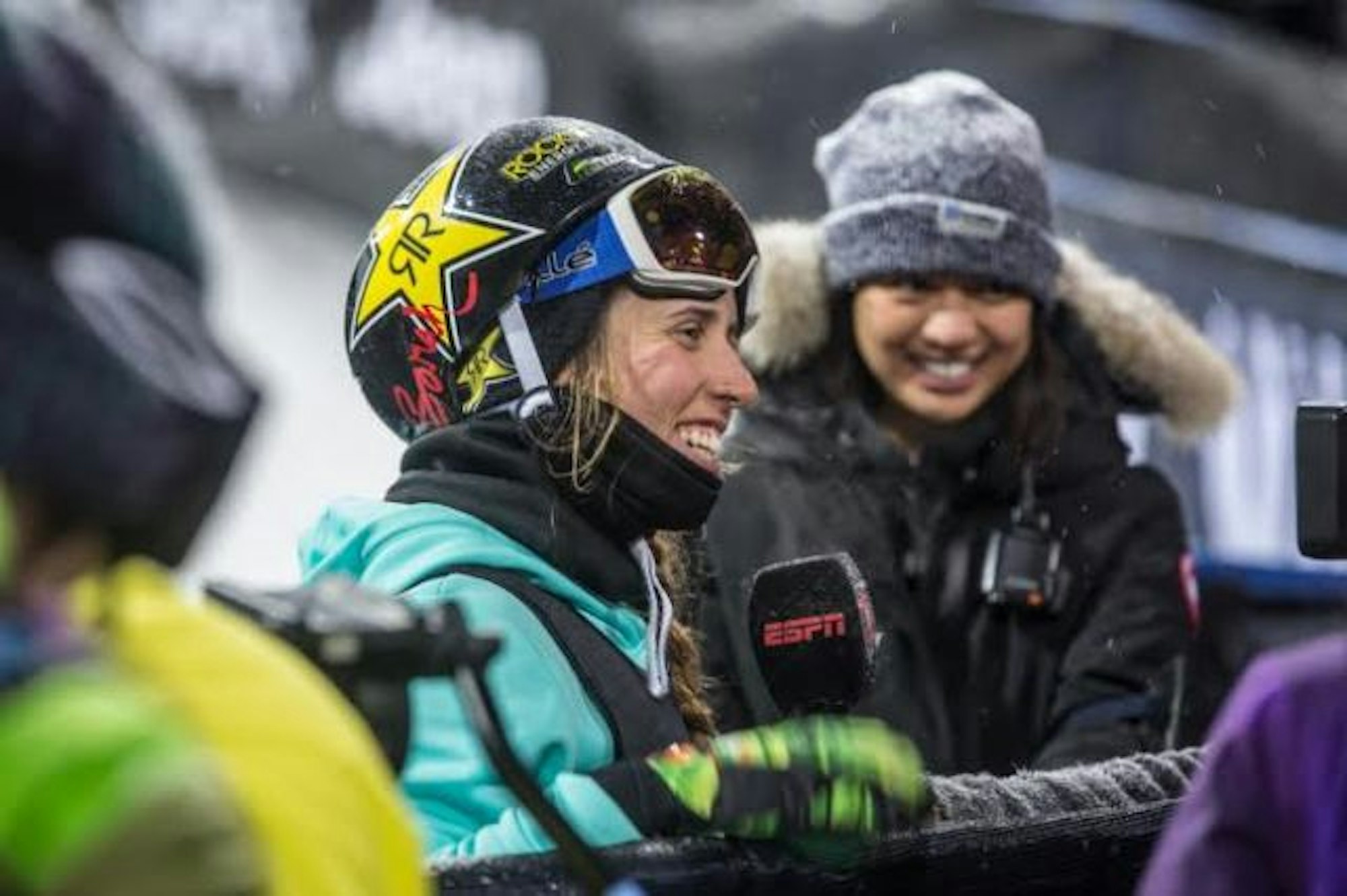
Maybe what should be said is, “Ladies, please stop progressing. We liked it better when you went big and got your grabs. Stop trying to spin more or to learn new tricks.”
If people aren’t enjoying watching women’s halfpipe skiing today, then perhaps it comes down to the way in which the sport is judged. Because of the judges’ reward for progression in terms of technicality, many women have focused their efforts on unnatural spins and switch hits, often resulting in lack-luster amplitude and missing grabs. The women that were doing 1080s stopped, because it wasn’t winning contests. So then, why take the risk? How do we strike the balance between progressing technicality, and presenting a run that spectators and fans deem exciting to watch? Of course, we all aspire to have the whole package: to go massive from top to bottom, to figure out that elusive switch pipe take off, to get our grabs every time in really difficult tricks, but until then, how do we please the masses? The answer: we don’t. We keep doing what we’re doing—managing risk and reward for ourselves, working as a community, encouraging the next generation of girls to ski halfpipe, and to convince them, that despite the harsh words we might occasionally receive from the industry, it is most definitely worth it.
Watch: Jen Hudak wins 2010 X Games Gold, Aspen, CO
Watch: Sarah Burke wins 2011 X Games Gold, Aspen, CO
Watch: Rosalind Groenewoud wins 2012 X Games Gold
Watch: Maddie Bowman wins 2015 X Games Gold, Aspen, CO

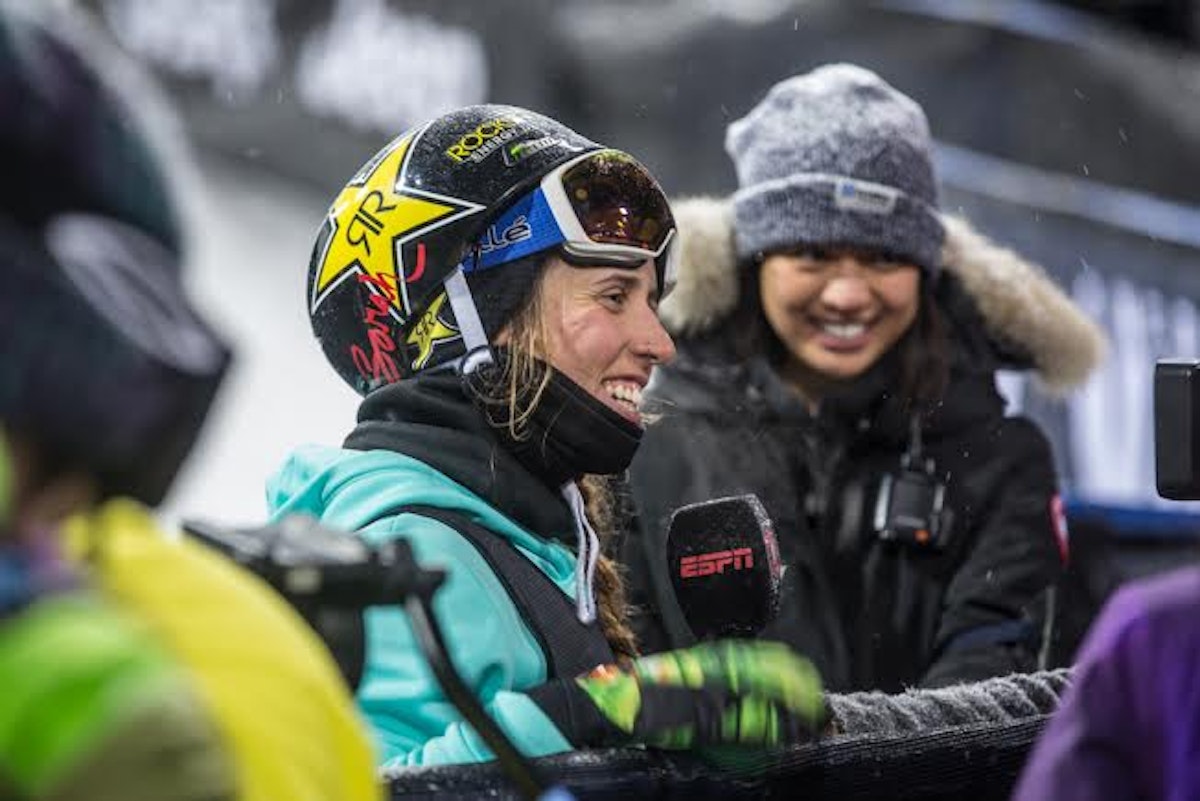

![[GIVEAWAY] Win a Head-to-Toe Ski Setup from IFSA](https://www.datocms-assets.com/163516/1765920344-ifsa.jpg?w=200&h=200&fit=crop)


![[GIVEAWAY] Win a Legendary Ski Trip with Icelantic's Road to the Rocks](https://www.datocms-assets.com/163516/1765233064-r2r26_freeskier_leaderboard1.jpg?auto=format&w=400&h=300&fit=crop&crop=faces,entropy)




![[GIVEAWAY] Win a Head-to-Toe Ski Setup from IFSA](https://www.datocms-assets.com/163516/1765920344-ifsa.jpg?auto=format&w=400&h=300&fit=crop&crop=faces,entropy)


